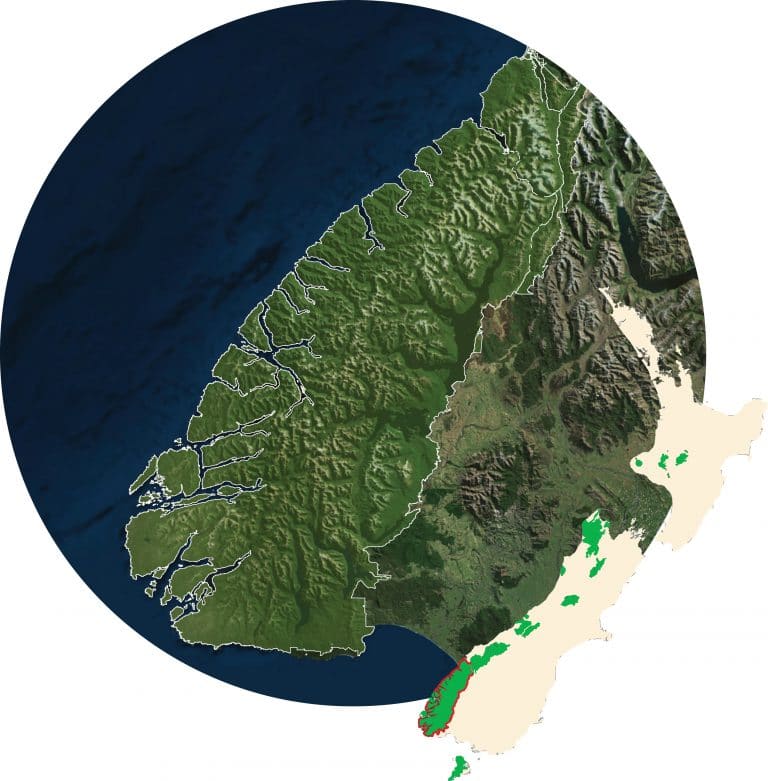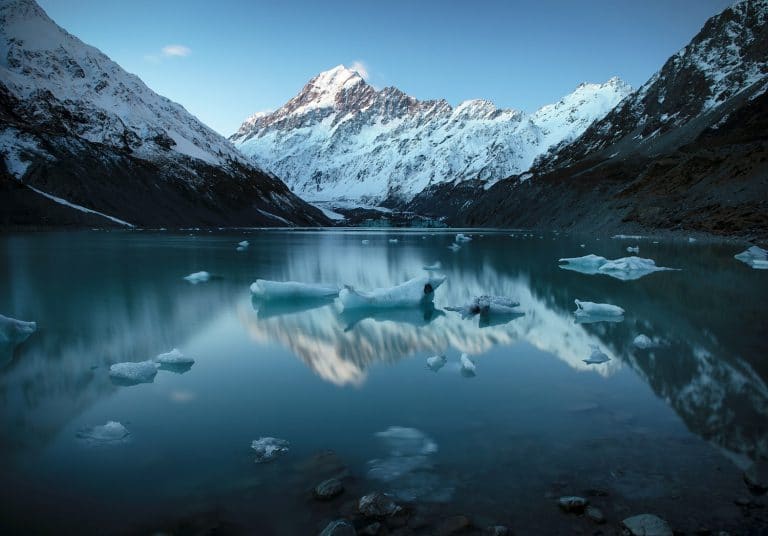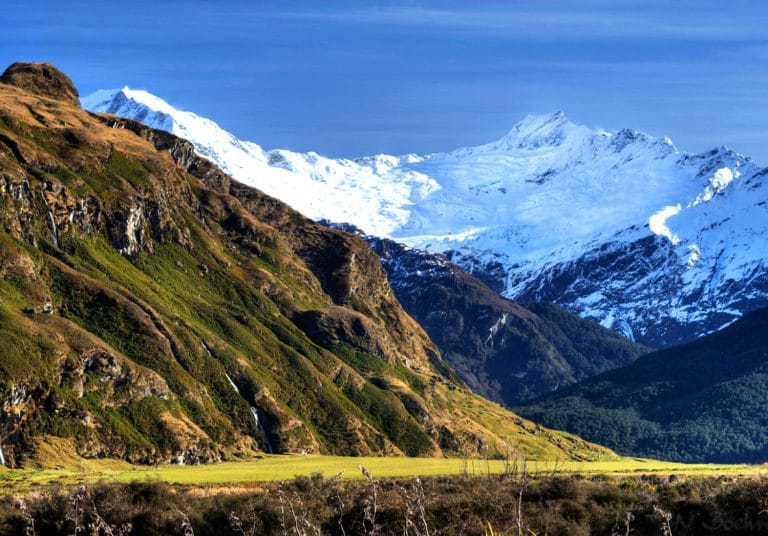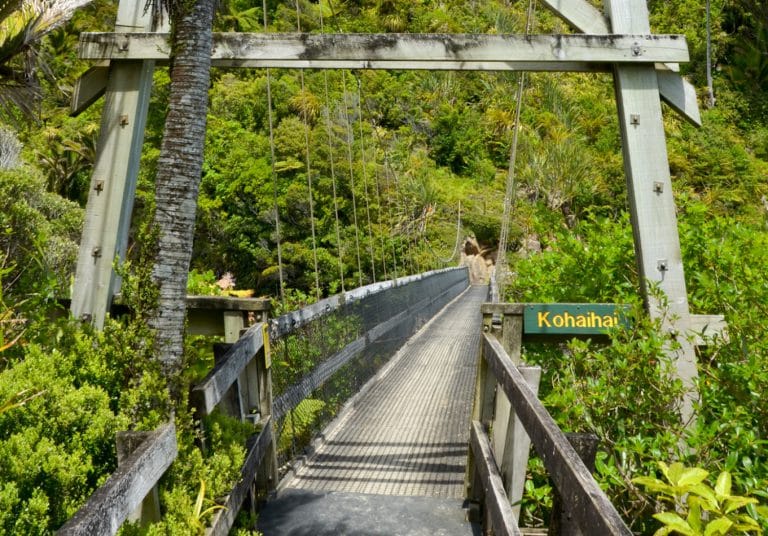Aoraki Mount Cook is the outcome of the Pacific and Indo-Australian plates colliding for many millions of years. The tallest mountain in New Zealand – rising 3764m almost directly out of the sea…
Hiking
he Milford Track is regarded as one of the finest walks in the world. The track was established in the late nineteenth century and is now so popular that almost all available places are taken within minutes when bookings open for the season.
Frederick Mintaro Bailey Muir - Expedition party led by Quintin McKinnon, 1888 - Workmen standing on the track to Sutherland Falls, Milford Sound, circa




